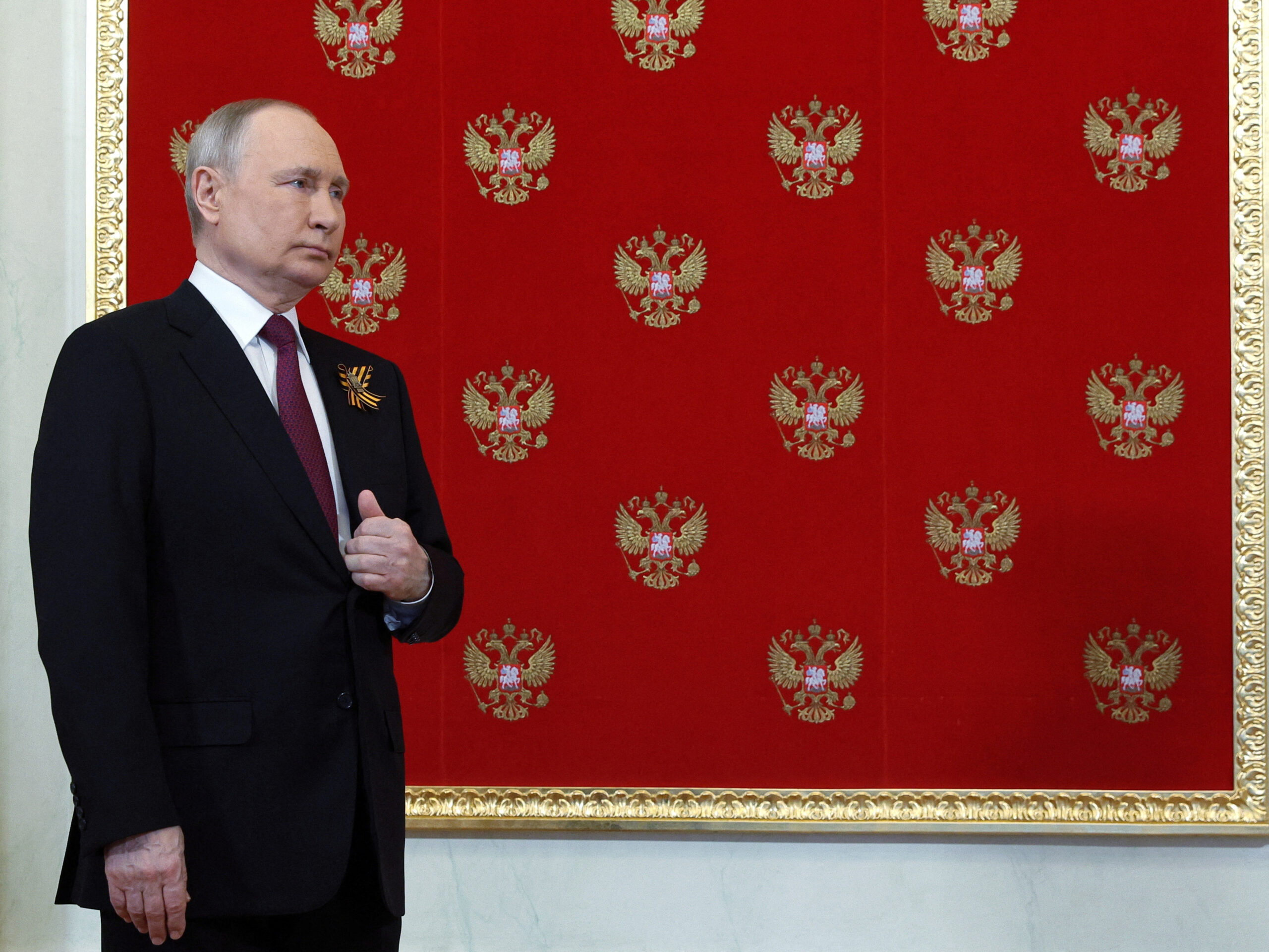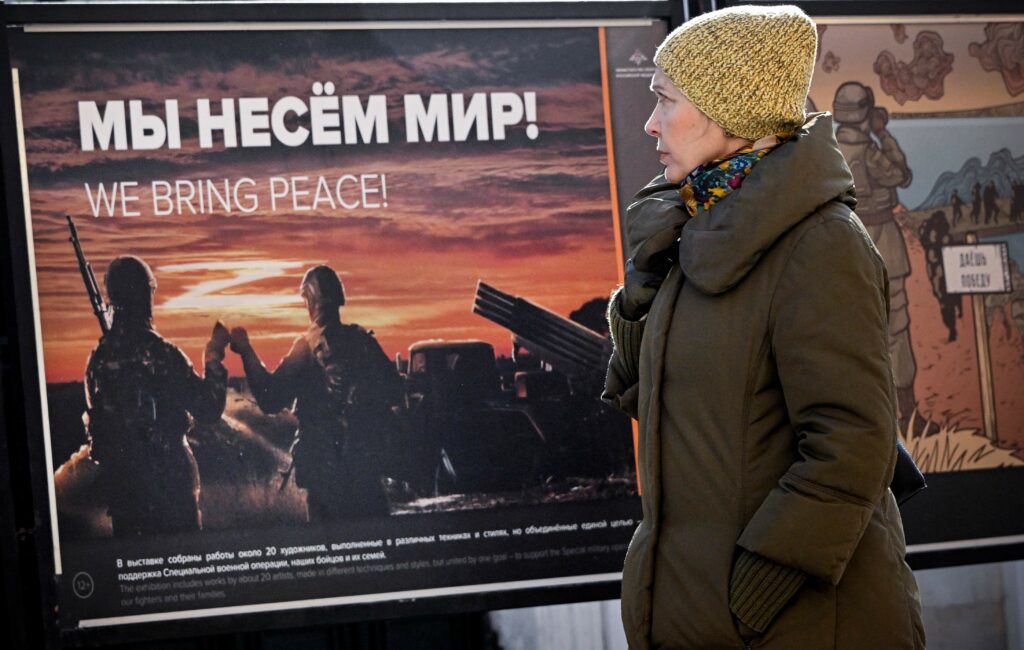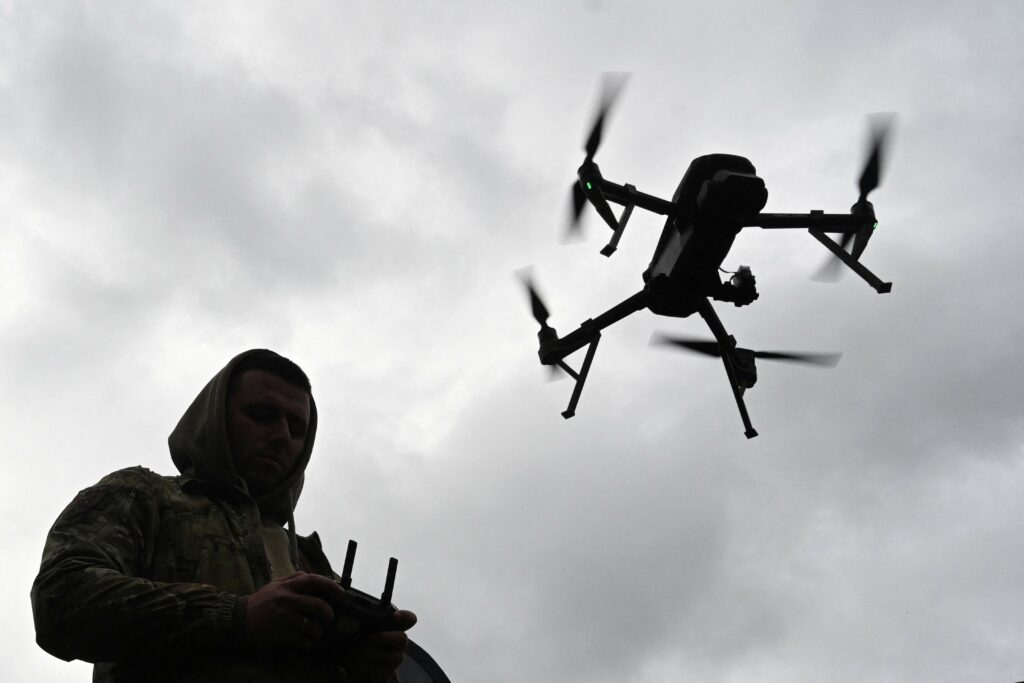Explaining the decision to invade Ukraine has been an ongoing debate in academic and policy making circles since the day Russia declared its ‘Special Military Operation.’ Why exactly did Russia go to war — and why in 2022?
The most prominent arguments today have been primarily structural in nature, with two frameworks most often cited: one, which characterizes the war as a preventative effort triggered by a great-power reaction to NATO enlargement, and another that explains the war as prompted by Russia’s aggressive, ideological opposition to the very existence of an independent and democratic Ukraine, which it viewed as a fundamental threat to its own authoritarian regime.
Approaches like these, whether specified in pure power-balance terms or supplemented with inflections of ideational content, give pride of place to macro-level forces — changes in regionally-specific elements to the global states’ system led to war. But for many they seem insufficient, not least because these happen to be a repetition of the same arguments from eight years before and have difficulty adjudicating why we saw war in 2022, rather than 2021, 2019, 2017, or earlier. A third common argument, which proposes simply that ‘Russian nationalism‘ caused the war, similarly fails to provide compelling reasons for the war’s timing, but also remains popular.
A fine-grained approach helps nuance the debate’s current imbalance towards structural, slow-moving emphases. Just walking through the immediate prewar period of 2021−2022 highlights something oddly overlooked: the specific agential role of Vladimir Putin himself, distinct from much of the Russian state elite and bound to particular grievances that do not primarily fit either a ‘NATO’ or ‘democracy’ framing and interact with ‘nationalism’ claims only in a highly idiosyncratic way. Indeed, it is the powerful and eccentric combination of Putin’s growing obsessions and grievances, his unusual pandemic-era isolation, the misjudgment of a sycophantic, siloed information environment catering to the president’s whims, the decade-long development of presidential super-centralization, and the privileged access of a few court elites that created the conditions for a decision for war in 2022.
Focusing on the personal motivations of the Russian President, not as a kind of generic international villain but with contextual specificity to the immediate 2021−2022 period, provides a better framework to build out a compelling, multicausal account as to why and for what purposes Russia invaded Ukraine in February 2022. Structural approaches, of course, remain valuable as relevant environmental conditions, but not as primary causes. Interacting structural elements with an agency-foregrounded account that privileges the personal nature of and unique decision-making ecosystem surrounding the decision for war is more causally complicated, but likely far closer to the truth.
The Insufficiency of Structural Narratives
Let us look again at the range of arguments for why Russia went to war with Ukraine in February 2022. Two prominent accounts have been particularly influential in policy-influencing circles, and conveniently also legibly fit into common framings repeated in journalism, op-eds, and among the wider public. This can be summarized by the now-infamous Mearsheimer-McFaul debate, which touched off after the annexation of Crimea in 2014 and was renewed in the wake of Russia’s new invasion eight years later. Naturally, these causal arguments about the war’s start are inextricably tied to motivated debates about normative justifications as well.
Pitched at a high level of abstraction, the Mearsheimer argument claims that NATO expansion is the fundamental reason for the war, where changes to Ukraine’s position in the international system created a credible threat to Russia as a great-power, leading it to respond in kind against a growing military threat. As Ukraine further integrated into the Euro-Atlantic security architecture, that threat grew in proximate danger, such that by 2022 Russia had no choice but to engage in a preventative war.
Thus, structural realist concerns with power-balance, threat reduction, and the changing correlation of forces led to war. In this sense, Russia’s decision for war can be characterized as the decision of a unitary, great-power actor clearly assessing the material facts on the ground. The specified tipping point here would be some kind of realization by the Kremlin that Ukraine would imminently be integrated into the NATO security architecture in the near-term, and thus the decision for a military intervention was perceived as a ‘now or never’ issue. Yet why the NATO issue spurred on the sudden capture of Crimea in 2014 and then only eight years later led to a renewed round of conflict is difficult to square.
Similarly de-nuanced, the McFaul (and later McFaul & Person) view rejects neorealist anti-expansion justifications for the conflict and rather focuses on ideology and regime, although it remains pitched in high-level, structural terms. In this account, the Russian government — a kleptocratic, anti-Western, authoritarian political regime — could not allow its largest and most culturally-close neighbor to become a successful, Western democracy. In this reading, the Russian autocracy would be fundamentally undermined by the continued example of a thriving democratic Ukraine, and so it needed to be destroyed.
This is also a structural account, but one that relies more on an ideological causal logic which is then applied to great-power politics viewed as a fundamental threat to perceived spheres of influence. The specified, predictive element to this theory would point to increasing democratization (often characterized primarily as Westernization or Europeanization) in Ukraine that reached a point-of-no-return sometime in the early 2020s as the final precipitant for conflict. While the early version of this framing highlighted Putin’s personal aggression, by 2022 it had recrystallized along more structural lines — a more democratic Ukraine was an ever-greater and more proximate danger to Russia’s own regime stability. But if it is democracy that is the threat, again, why wait until 2022?
We can also attach a third common argument to these debates: that the generic cause for war was simply irredentist Russian nationalism. This is a widespread vein of thought especially found in op-eds and public commentary, although less so in scholarship. The reasons are fairly evident, as the presence of nationalism — even irridentist, militarist nationalism — is infamously difficult to assign singular causal weight. Nationalism is usually applied in an interactive sense, providing rationalizations and justifications for war, or shaping the substantive political goals of war, rather than its initiation. That is, something like ‘imperial nationalism‘ is a relevant ideological element of the modern Russian regime, it lacks specific explanatory power to be anything other than a handwave or a background condition. To say that Russia invaded Ukraine for nationalist reasons runs into the problem that those conditions and beliefs have been present for decades.
There are of course many variations to these that provide more reasons for the temporally-specific choice for war (here they represent generic, ideal positions). Other explanations include a global retrenchment following the Covid-19 pandemic, new perceptions of exaggerated US weakness following the withdrawal from Afghanistan, applications of diversionary war theory for a Russian regime with flagging popular support in the early 2020s, egregious Ukrainian non-compliance with the Minsk II agreement, and accelerating Ukrainianization policies under President Zelensky’s evolving administration, among others.
Most of these more detailed arguments are a little less macro than the enlargement vs. democracy arguments that take up significant amounts of policy air. But they mostly share structural framings of causal origin — Russia went to war because of some overwhelming structural change at the level of the regional or global states system, whether in pure power terms or with an ideological dimension. Noticing this analytic dissatisfaction, a narrative walkthrough of the course of events in 2021 helpfully identifies a key missing emphasis: sufficient appreciation for the individual, agential role of Vladimir Putin himself as Russia geared itself into an aggressive military posture from Spring 2021 onward.
A Stylized Agential Framing of the Runup to War
The causal case for emphasizing Putin’s agency is straightforward, while still allowing for a nuanced mix of justifications based on structural analyses of the international system and ideational motivations that provide emotional and symbolic heft to moving forward on a decision for war. Focusing on the individual-level also allows us to highlight intra-bureaucratic incentives and personalist authoritarian decision-making silos as relevant contextual factors. Succinctly put, over the course of the very late 2010s and into the 2020s, Vladimir Putin had become ever more obsessed with revising the status quo ante-maidan; he had developed a personal ideological fixation on Ukraine in historical, ethnic, and civilizational terms, and was uniquely isolated from wider elite preferences due to strict pandemic isolation protocols, highly-developed presidential centralization, and bureaucratic privileges in information access given to sycophantic subordinates. Yet only in 2021 — and counter to macro-level factors that apply across a far wider band of time — would this panoply of shifting inputs operationalize as readiness and willingness to go to war in 2022.
We can see all of these elements work in tandem at greater levels of seriousness over the course of 2021. Military exercises set for Spring 2021 were larger than anticipated and collected a major concentration of forces on the Ukrainian border. Some analysts suggested that this was preparation for a military offensive, but no such intervention came. Reporting in Russia close to the presidential office however suggested that the operational activity was less in response to a directive for war, but rather a directive to be in position to allow the Kremlin to engage in military activity should it be later deemed necessary. This also suggests the personal element — an order to prepare is designed to give options for leadership, above all.
A second point notes the extreme isolation of Putin during the year prior to the war. Due to pandemic quarantine procedures, the president was cut off from the larger cohort of traditional policy-influencing elites in Russian national security circles. Yuri Kovalchuk, a close associate to Putin and a longtime anti-Western agitator, was unique in maintaining close access to the president throughout the period. Personal grievances about the Zelensky administration’s treatment of Putin’s Ukrainian ally Viktor Medvedchuk in early 2021 were reportedly a major element of conversations just prior to the initial spring military exercises as well.
Although assessments that Putin decided for war because of the travails of his Ukrainian oligarch friend are likely overemphasized, they can be read productively as another point in favor of highlighting a grievance-obsessed Russian president in the reins directing the Russian state’s outwardly otherwise poorly telegraphed preparations. And this environment of personal bitterness was coupled with a highly siloed information environment that had developed over the course of increasing authoritarian personalization of the 2010s. Select bureaucratic channels dominated by FSB reporting formed the basis of Putin’s understanding of Ukrainian politics and increasingly diverged from generic elite opinion on the state of Russian-Ukrainian relations.
A third, ideational datapoint comes in the summer of 2021, when Putin published his essay «On the Historical Unity of Russians and Ukrainians.» It is a text that, while dismissed as an unserious eccentricity at the time, is sure to figure prominently in historical accounts of our era. The essay elaborated a baseline causa ad justificationem, focusing on the historical injustice of Ukraine’s artificial separation from Russia due to communist nationalities policies and the happenstance and unintended collapse of the Soviet Union. Most notably, the case for Ukraine’s historical destiny as part of Russia was pitched in ethnonational and civilizational terms, rather than balance-of-power concerns on the international stage or special animus against democracy as a regime-type itself. We also know now that the essay was a major personal interest of Putin, who remained isolated and had spent a great deal of time ordering primary documents from Russian state archives to buttress his argument.
Finally, by Fall 2021 Western observers noted that the Spring military buildup had never been drawn down and was rather being augmented by further deployments. The first public case for a likely Russian invasion by a Western analyst was floated in late October, and then in a follow-on article in November at Foreign Affairs. But while force posture had changed towards a very clear and present danger of deployment by the end of the fall, Russian elites — and even the majority of security service elites — still remained in the dark. Russian diplomatic assertions that a new settlement over Ukraine was needed only happened belatedly in December, which suggested that the Foreign Ministry was caught unprepared by the Kremlin’s sudden seriousness about revising the situation. Diplomatic formalities in January also underlined how the foreign policy apparatus in Russia was playing catchup to an obsessive view to revising the status quo at the very heart of the Kremlin.
A large corpus of Russian reporting has repeatedly noted that most of the Russian power elite was shockingly uninformed about the seriousness of internal debates regarding a decision for war, and immediate elite reactions in the wake of the Special Military Operation’s declaration at Security Council meetings and in limited public commentary adds weight to this assessment. It is difficult to square this with claims that pervading structural logics were the decisive element, if only the Russian president really could see them as such. All this suggests that we should be serious about privileging Vladimir Putin and his personal motivations, grievances, and unusually empowered (and isolated) position as the core agent in moving war from an idle discussion to a firm reality.
Foregrounding Agency in the War Debate
None of these points suggest that structural accounts have no weight in discussions on the war’s proximate cause. Concerns about NATO expansion have long been a part of Putin’s rhetorical arsenal from 2007 onward, while the belief that the Ukrainian political regime was uniquely hostile to Russian goals has been the case since 2014 and likely accelerated after Zelensky’s presidency. McFaul’s earlier argument about an «erratic adventurism» admits the personal touch that the above narrative highlights but developed into a more structural account over time favoring a generic fear of democracy. And both views must be taken as further, supportive elements to the informational and ideational backdrop of isolated, all-pervasive historical grievance that affected the president personally. The failure of many Russian elites to correctly assess the president’s changing view on the seriousness of the situation, in his eyes, makes it difficult to assign broad structural forces as the primary reason for war in February 2022, rather than the personal and emotionally-bound worldview of the Russian leader.
Does this mean that we should take away a simple «Putin = generically bad» answer to the question of the war’s cause? No, but it certainly should remind us to foreground the unique agency of the Russian president in a very particular — and as it turns out, destabilizing — personal context. Vladimir Putin was uniquely isolated, uniquely obsessed, and uniquely empowered to make a personal decision for war in 2021 and 2022. Whether he internally made that decision in Spring of 2021 or closer to the invasion date in January of 2022, we will not be able to know for some time. But the decision was his, and the runup to the invasion underlines a special place for personal and ideational motivations for war that cannot be waved away by structural arguments. Between 2020 and 2022, Putin had changed the way he thought about matters — and both outsiders and insiders were very surprised by what that meant.










